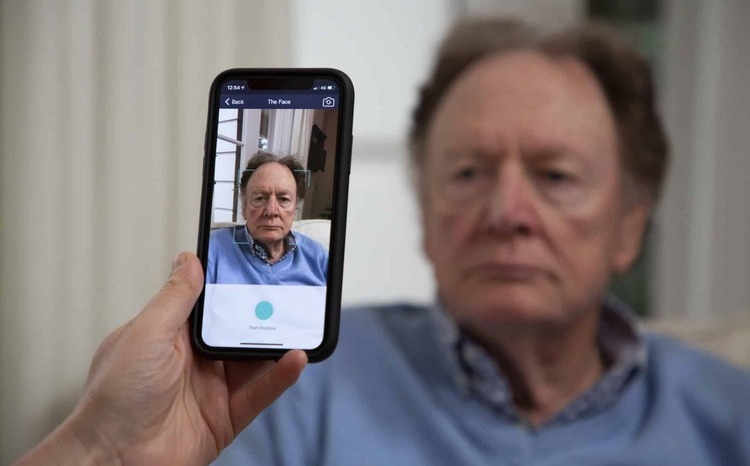All change, please
- 28 March 2013

It’s hard to believe that between 1948, when the NHS was established, and 1974, when regional and area health authorities were created, the health service was left un-reorganised.
Since then, the pace of ‘reform’ has picked up to the point where major changes, such as the introduction of general management and the internal market, can be expected every decade, and minor changes to purchaser or provider bodies can be expected every year.
Even so, the shake-up that took effect at midnight is bigger and far more hotly contested than most.
As the calendar clicked over, the government made big changes to commissioning, opened the door to far more private involvement in healthcare, and shook up IT at all levels.
Two years in the making
The latest changes were triggered by the ‘Equity and Excellence: Liberating the NHS’ white paper, which was published by then-health secretary Andrew Lansley in July 2010.
The Conservatives had promised that that there would be no “top down reorganisation” of the NHS during the general election campaign that had been run in May.
Yet Lansley promptly announced that he wanted two broad sets of changes: to “put clinicians in the driving seat on decisions about services”; and to “put patients right at the heart of decisions about their care” while focusing the NHS on improving outcomes.
To achieve the first of these, he unleashed a massive reorganisation of the NHS’ commissioning (or planning and contracting) organisations.
Some two thirds of NHS commissioning was to be taken over by what were initially called GP commissioning groups, with more specialist commissioning organised by a new NHS Commissioning Board in Leeds.
At the same time, much of the Department of Health, its strategic health authorities, and the existing local commissioning organisations – primary care trusts – were to be abolished.
Like so many health secretaries before him, Lansley claimed his changes would “remove unjustified targets and the bureaucracy that sustains them.” Yet the commissioning board became steadily more powerful as the detail of the reforms was worked through.
To head off accusations that the GP commissioning groups would buy GP services from themselves, the board got the job of primary care commissioning.
And to keep a “grip” on NHS finances, while making sure the new structures were up to the job, it got to both authorise the commissioning groups and to create an NHS Outcomes Framework, split into five domains and almost 100 indicators.
One result is that NHS England, as the commissioning board became at midnight, has some strong continuities with the old system of “top-down” management of the NHS, even if it works at one remove from the health secretary, via its “mandate”.
Sir David Nicholson, the former chief executive of the NHS, is now the chief executive of NHS England, which already has a London headquarters in Maple Street, has retained local area teams on the footprint of the old SHAs, and has an outcome monitoring regime in place that might look, to an outsider, just as bureaucratic.
Rows, changes and non-changes
When the white paper launched, however, the attention of critics was not on the commissioning board, but on the GP commissioning groups and the second strand of Lansley’s reforms; increasing patient choice and driving up NHS performance.
Inevitably, other professions worried about the prominence being given to GPs, while unions and the Liberal Democrats slowly mobilised to oppose Lansley’s recipe for improved performance.
Essentially, this was to reinvigorate New Labour’s market-based reforms, with a new push on making all trusts foundation trusts and to open up more services to competition from ‘any willing provider.’
Although the Health and Social Care Bill that enacted the changes made its way through Parliament unscathed, the growing chorus of complaint outside Westminster forced the government to “pause” the reforms in April 2011.
An NHS Future Forum, under the leadership of Professor Steve Field, was set up to “listen” to the concerns and propose changes. More professions were included in commissioning and the GP commissioning groups became clinical commissioning groups.
As it became obvious that Lansley’s original plans had overlooked the many statutory functions of PCTs, and the commissioning board got into their authorisation, these steadily acquired more responsibilities and more professional managers.
As a result, the CCGs that started work at midnight bear many of the responsibilities of the organisations that they replace; even though they have cost some £2 billion-£3 billion to implement.
Indeed, although there were 151 PCTs and there are 212 CCGs, the commissioning board has put “conditions” on the authorisation of so many that a “rationalisation” to produce a smaller number of more effective bodies can be only a couple of years away.
However, Professor Field’s work means that CCGs will have to work with a plethora of new co-ordination and oversight bodies.
These include clinical senates, whose role remains unclear, and Health and Wellbeing Boards, which will link the NHS to local authorities; which are regaining the public health responsibilities they lost in 1974.
Accepting these complications allowed the government to claim that it had listened during the pause and to get the Health and Social Care Act through Parliament last Easter. Yet Lansley made it clear that the “substance” of the provider side of his reforms escaped unscathed.
Trusts are still expected to make foundation status by April next year, by merger or take-over if necessary. And commissioners still have more scope to buy from what is now called ‘any qualified provider’ where ‘qualified’ is mean to convey an element of quality and local selection.
This is why Unison, one of the strongest and longest-running critics of the changes, said overnight that: “Even more precious funds will be leached out of the NHS by the growing involvement of private providers whose primary duty is to make profits for their shareholders, not to provide the very best care for patients.”
Confusion for primary care IT
All these changes have had a considerable impact on NHS IT and information services, particularly those used in primary care.
Responsibility for the GP Systems of Choice framework, which guarantees GPs a choice of clinical IT system, has moved from NHS Connecting for Health to NHS England.
GPSoC ran out at midnight, but an extension should have been negotiated, since the commissioning board has said that a new deal will not be signed until the end of the year at the earliest.
Responsibility for other GP IT spending was moved, at a late date, to CCGs, but the money they will have to spend remains unclear.
Those PCT staff who provided IT and information support to GPs may also have expected to move to CCGs.
But their future has been complicated by the introduction of commissioning support units to provide commissioning, finance, HR, and informatics support to the new bodies.
These organisations have had a short but troubled history. They have gone from being named commissioning support organisations to commissioning support services to CSUs; they have been whittled down from 35 to just 19; and their precise role and accountability is still in flux.
To take just one example, most CSUs will be hosted by NHS England, at least until they can become stand-alone or non-NHS organisations through a process of “externalisation” that must be complete by 2016.
Yet it was announced in February that the handful of CSUs that will be data management integration centres, and so feed the NHS Outcomes Framework, will be hosted by the Health and Social Care Information Centre, as the NHS Information Centre became overnight.
Despite this CSUs are potentially important players in the new health service. Successful CSUs are likely to emerge as the major customers of primary care IT, information and analysis services, on behalf of their CCG clients.
This, as the BMA spotted early on, could mean that they have a significant role in shaping the commissioning decisions that CCGs make, providing a “back-door” route for the “privatisation” of planning and purchasing.
Three way splits
The impact of the reforms on NHS IT has been amplified by the government’s very public decision to abolish the National Programme for IT in the NHS (not once, but twice, in 2010 and 2011).
CfH, the agency that ran NPfIT and other national IT programmes, was finally put out of its misery at midnight, with the slimmed down DH taking on some of its policy and advice roles, and the bulk of its work transferred to NHS England and the HSCIC.
The HSCIC will be responsible for the day to day work of managing and monitoring national systems and services, and for huge amounts of potentially controversial data collection, both for NHS bodies and for public consumption.
The government’s response to the Francis inquiry into the scandal at Mid Staffordshire NHS Foundation Trust emphasised the importance of the HSCIC last week.
It underlined that the HSCIC would determine what data should be collected to provide a “single version of the truth” about hospital performance, while driving down the burden of data collection over time.
Yet it is NHS England that has had the highest profile so far, thanks to the reliably headline-grabbing pronouncements of its national director of patients and information, Tim Kelsey.
Kelsey has promised everything from a new customer service platform to replace NHS Direct, NHS Choices and other digital services, to an app store of “game changing” apps, and a Code4Health initiative to get clinicians and (even more improbably) patients programming.
Despite this, NHS England is likely to have a bigger impact on NHS IT through the way it handles the unfinished business of the national programme.
This means, in particular, CSC’s deal for Lorenzo in the North, Midlands and East, and the re-procurement of key infrastructure, including the N3 network, national data spine, and NHSmail.
Going forward, it is NHS England that will be responsible for commissioning and sponsoring new IT standards, information governance rules, services and systems; and so for shaping the future of NHS IT in hospitals and across healthcare economies.
Lansley indicated that the future lay in a “vibrant” NHS IT supplier market, and more local choice of IT system. But his successor, Jeremy Hunt, has subtly changed this emphasis.
In January, he said he wanted a "paperless NHS" – or one using electronic patient records and communications – by 2018.
Since then, he and his aides have shown a renewed interest in getting trusts to adopt electronic patient records as the foundation for the paperless revolution, and in mapping out a route for them to get there.
In this context, the guidance that NHS England is due to issue in June is crucial. But that is one of the lessons of NHS reorganisations.
Whatever the minister’s intentions, whatever the white papers and bills say, it is the organisations on the ground that will determine what actually happens – and sow the seeds of further changes to the system.
Timeline:
July 2010: White paper ‘Equity and excellence: Liberating the NHS’ published
September 2012: Government “axes” National Programme for IT in the NHS
December 2010: Sir David Nicholson appointed head of the NHS Change Team, primary care trusts told to merge into ‘clusters’ ahead of abolition
April 2011: Passage of the Health and Social Care Bill “paused”. Future Forum asked to “listen” to concerns
June 2011: Future Forum reports, government accepts recommendations
September 2012: Government “accelerates” end of NPfIT
October 2011: NHS Commissioning Board starts work as a special health authority
February 2012: Department of Health issues guidance on commissioning support organisations (units)
March 2012: Health and Social Care Act becomes law, Tim Kelsey is appointed national director of patients and information
September 2012: Jeremy Hunt replaces Andrew Lansley as health secretary
January 2013: Hunt calls for “paperless” NHS by 2018
1 April 2013: NHS Commissioning Board becomes NHS England; NHS Connecting for Health is abolished; The NHS Information Centre becomes the Health and Social Care Information Centre; ten strategic health authorities are abolished; 151 primary care trusts are abolished; 212 clinical commissioning groups start work; 19 commissioning support units start work.




